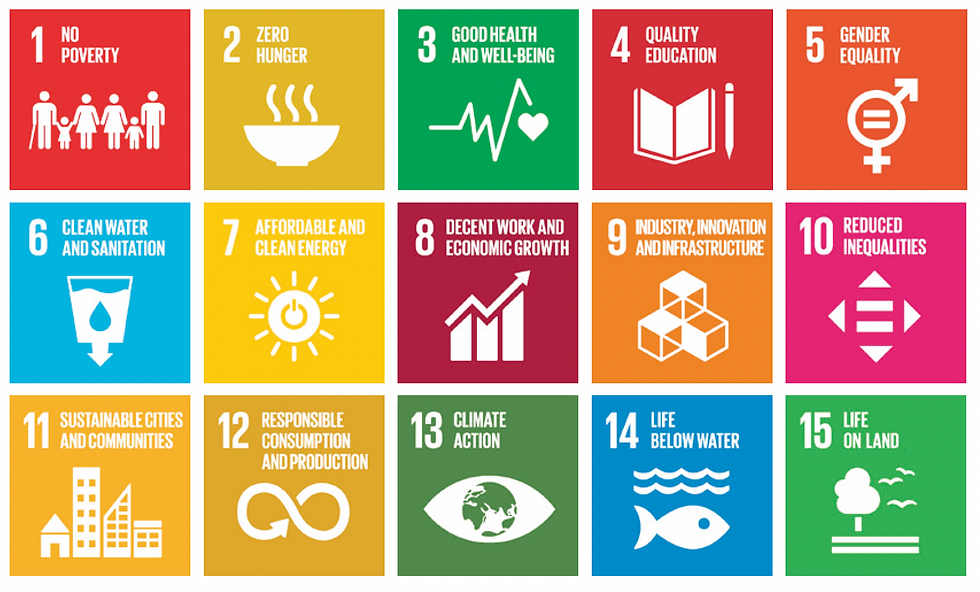iF Design Newcomers: Guide to Submission Format and Topic Selection. (Must-Read)
- 許 世琛
- Feb 3, 2024
- 3 min read
Updated: Feb 4, 2024

The journey towards the iF Design Award for students is about to begin! In this blog post, I will share key format requirements for submitting your work, along with an overview of the United Nations' 15 Sustainable Development Goals, to guide the direction of your design project. Let's get ready step by step to make sure your design makes a splash in the competition!

I've noticed that many students attempt to align their completed designs with the United Nations' 15 Sustainable Development Goals, often finding this approach to be less than ideal. I want to remind everyone that it's crucial to familiarize yourself with these goals before starting your design process. By focusing on these global issues from the outset, not only can you enhance the relevance of your projects, but more importantly, you can significantly increase your chances of winning awards. Let's adopt a goal-oriented approach to ensure our designs are not only innovative but also stand out in competitions, achieving meaningful impact.
Participating in competitions is not only a chance for design students to showcase their talent but also an opportunity to gain real-world insight into industry standards. To help you navigate this path more efficiently, I've provided a detailed submission template for design competitions.
The template is organized into three main areas:
Area 1 is where your design work takes center stage, showcasing your visual creativity and design solutions. This is your opportunity to demonstrate your skills and creativity to the judges.
In Area 2, it's crucial to ensure that the judges have all the necessary information about participation. This area should clearly list the entry ID, category, project name, and your personal information, including name, university, country, and department. Presenting this information clearly can help judges quickly and accurately identify your work during the evaluation process.
Area 3 is reserved for the margins needed during the printing and assembly. These details might seem minor at the final stage of your submission, but they're vital for maintaining your work's neatness and professional appearance. Ensure adequate blank space at the top and bottom for an attractive and practical presentation.
Ensure all text is in the required font size and style, such as 20pt Helvetica, Arial, or another sans-serif font, and all images are submitted at high resolution (at least 300 dpi). Submissions are typically PDF format to ensure consistency and professionalism during the evaluation.
Before submitting, double-check that your work complies with the specified dimensions (e.g., 840 x 594 mm) and file size limit (no more than 5MB). Ensure all colors are created in RGB mode, which is critical for maintaining color accuracy across different screens.
Remember, details make the difference. Make good use of this template to ensure your work stands out in the competition.

This image displays the 15 United Nations Sustainable Development Goals (SDGs), which represent a global commitment to achieving these objectives and also potential topics for the iF Design Award student category. Here are the English translations and brief explanations of each goal:
1. No Poverty - End poverty and improve living standards for all.
2. Zero Hunger - Ensure global food security and improved nutrition and promote sustainable agriculture.
3. Good Health and Well-being - Promote healthy lives and well-being for people of all ages.
4. Quality Education - Ensure inclusive and equitable quality education and promote lifelong learning opportunities for all.
5. Gender Equality - Achieve gender equality and empower all women and girls.
6. Clean Water and Sanitation - Ensure access to clean water and sanitation for all.
7. Affordable and Clean Energy - Ensure access to affordable, reliable, sustainable, and modern energy for all.
8. Decent Work and Economic Growth - Promote sustained, inclusive, and sustainable economic growth, full and productive employment, and decent work for all.
9. Industry, Innovation, and Infrastructure - Build resilient infrastructure, promote inclusive and sustainable industrialization, and foster innovation.
10. Reduced Inequality - Reduce inequality within and among countries.
11. Sustainable Cities and Communities - Make cities and human settlements inclusive, safe, resilient, and sustainable.
12. Responsible Consumption and Production - Ensure sustainable consumption and production patterns.
13. Climate Action - Take urgent action to combat climate change and its impacts.
14. Life Below Water - Conserve and sustainably use the oceans, seas, and marine resources for sustainable development.
15. Life on Land - Protect, restore, and promote sustainable use of terrestrial ecosystems, sustainably manage forests, combat desertification, halt and reverse land degradation, and halt biodiversity loss.
In upcoming blog posts, I will delve into these topics in detail, helping everyone understand each goal and how these global issues can inspire their design projects.
If you're interested in these topics, I invite you to follow my blog for more information. Additionally, if you have any questions or need assistance, feel free to contact me anytime. Let's design for a better future together!
Lastly, I'll showcase a selection of works formatted according to the iF guidelines for your reference.



Comments